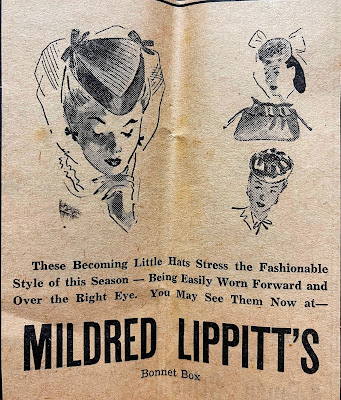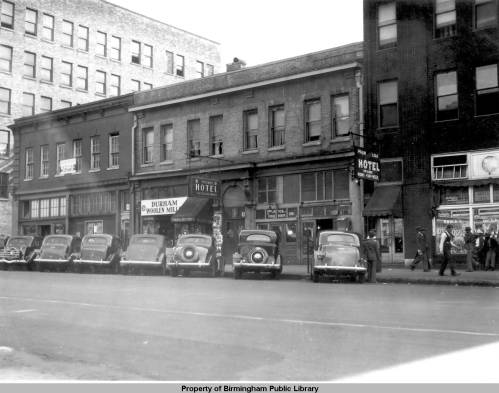I've written before on this blog about Dr. Halle Tanner Dillon, "the first certified, practicing female physician in Alabama". Dr. Dillon was a fascinating individual, the daughter of Benjamin Tanner, a prominent African-American minister in Pennsylvania and the sister of painter Henry O. Tanner. She graduated from the Woman's Medical College of Pennsylvania in 1891, the only black in her class.
She was recruited by Booker T. Washington to become the physician at Tuskegee Institute, and she agreed. However, first she had to pass Alabama's certification exam, a grueling test that took place over several days and involved prominent white male physicians as examiners. At the time just a few black male doctors had passed the test and were practicing in Alabama. Washington arranged for her to be tutored by one of them, an old friend, Montgomery physician Cornelius Dorsette. She passed the test.
You can read more details about her life and career in the blog post I linked to in the first sentence. I've recently come across the two newspaper articles below that I have not seen before and which offer information about Dillon's examination.
The earliest and second one below is from the Washington Bee on October 3, 1891. That District of Columbia newspaper was primarily read by African-Americans. The article is actually a reprint, with no author give, from the Alabama Exchange. I have been unable to locate any information about that publication; perhaps it was a short-lived African-American paper in the state.
Booker T. Washington expected Dillon to start work at Tuskegee on September 1, so this article notes she "applied" to the state medical board on August 17. She took the exam in the state health office in Montgomery, "in which she was required to write the answers, without referring to any book of reference". Her answers were scored on ten different topics by ten examiners, all white male physicians. The testing ended August 25. See my previous blog post for more details.
Dillon made a total of 78.81 and a 75 minimum was required, the article states. She will teach anatomy and hygiene at Tuskegee in addition to her clinical duties. "She had a good literary education, having spent six years in college, writes a masculine hand, and it is stated that her examination was very creditable."
The second article by date [first one shown below], was published in the Capital City Courier in Lincoln, Nebraska. This piece has an attributed author, Lida Rose McCabe, a white journalist best known as the first female reporter to visit the gold fields in Alaska. Her article was filed from Philadelphia on November 5, and appeared in the Courier two days later.
"Alabama has now its first woman physician," McCabe wrote. Some of Dillon's background is included. Before her first marriage she worked as a bookkeeper for the Christian Recorder. Founded in 1852 by the African Episcopal Methodist Church, it is the oldest continuously published African-American newspaper in America. Her father was a minister in that church. "She spent her leisure hours reading medicine", McCabe wrote. She entered medical school after the death of her first husband. "Dr. Dillon was subjected to one of the severest ordeals" in state history--presumably state medical examination history, which had begun in 1877. McCabe notes the reluctance of the state's conservative medical professionals to admit black doctors unless "fully qualified". However, "Mrs. Dillon was courteously received."
McCabe states with no exceptions that Dillon was Alabama's first female physician. The earlier Bee article claims that Dillon was the first female certified by the state medical board, and that another female physician had been certified by the Jefferson County medical board at an earlier date. Under the 1877 law governing medical practice in Alabama, a candidate could take the exam either in Montgomery at the state board or before any county board. This arrangement allowed county medical societies to retain some power.
The white physician named as certified in Jefferson County was Anna M. Longshore [1829-1912]. Like Dillon, she came from a prominent family. Her father Joseph, a physician, helped establish the Woman's Medical College that Dillon would graduate from four decades later. Anna and her cousin Hannah were among the eight women in the first class of 1852.
Longshore did indeed take the exam in Jefferson County, but the Transactions of the Medical Association for 1892 [p.142] list her as "certificate refused." Thus Longshore may have been the first woman to take a certification exam in Alabama, but she did not pass. See my earlier post on Dillon for more about Longshore's long career as a physician and lecturer on medical topics. Why she came to Alabama to take the exam remains a mystery.
Another question is why Dillon took the exam in Montgomery and not in Macon County where Tuskegee Institute is located. Perhaps Washington and Dorsette wanted her to attempt the test in the state capital, before prominent white physicians, where a successful effort would receive more attention.
As I noted in my original blog post on Dr. Dillon, she "was not the first female physician in Alabama, but the first to be certified by the state examination process under the law passed in 1877. In the 1850s Louisa Shepard graduated from her father's medical school in Dadeville, the Graefenberg Medical Institute. The school closed in 1861 after graduating some 50 students, including two of Louisa's brothers. She never practiced medicine; she married William Presley and they moved to Texas. Louisa died in 1901."
Source: Washington [D.C.] Bee 3 October 1891
Dillon's exam August 17-25, 1891, is available online via the Alabama Department of Archives and History.



















































